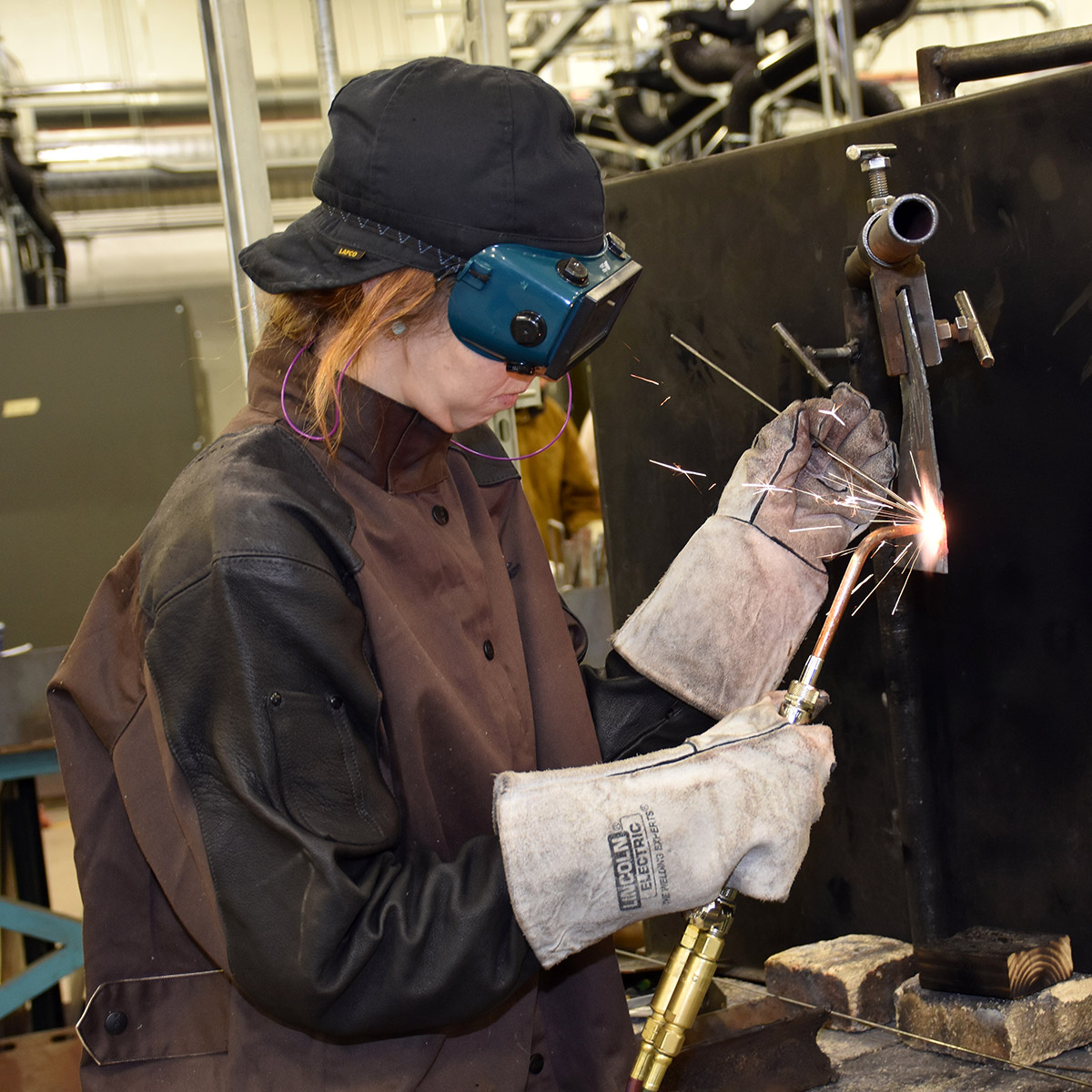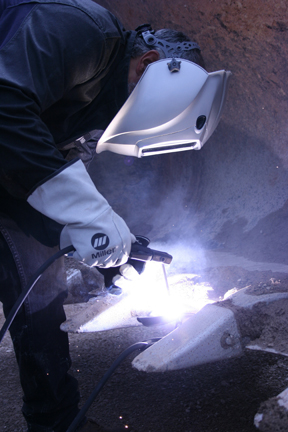Common Welding Repair Service Issues and How to Address Them Successfully
Welding repair work often come across an array of concerns that can threaten the stability of the final product. Common issues consist of insufficient penetration, porosity, and imbalance, to name a few. Each issue offers distinct difficulties that need certain methods for resolution. Understanding these concerns is crucial for welders aiming to improve their end results and skills. This conversation will certainly discover these usual welding repair service issues and effective methods to resolve them.
Insufficient Penetration
Inadequate infiltration takes place when the weld steel fails to fully fuse with the base product, causing weak joints and prospective structural failures. This concern commonly comes from insufficient warmth input, wrong electrode angle, or incorrect welding speed. Welders may experience insufficient infiltration as a result of a mistake of the necessary criteria for a details product density or kind. In addition, contamination on the base material's surface area can prevent efficient bonding, aggravating the problem. To attend to poor penetration, welders ought to ensure appropriate settings on their tools and preserve a tidy job surface area. Regular examination of welds is advised to identify any type of deficiencies early, enabling timely improvements and the prevention of compromised structural stability in bonded assemblies.
Porosity
Porosity is an usual problem in welded joints that materializes as little gas bubbles trapped within the weld metal. This flaw can compromise the integrity of the weld, leading to reduced toughness and possible failing under tension. Montana Mobile Welding and Repair Fabrication. Porosity commonly develops from contamination, wetness, or incorrect welding methods, which enable gases to escape right into the liquified weld swimming pool. To address porosity, welders must assure appropriate surface prep work, preserve a clean workplace, and make use of ideal welding parameters. In addition, picking the right filler material and protecting gas can alleviate gas entrapment. Regular assessment and testing of welds can aid determine porosity early, ensuring timely restorative activities are taken, therefore maintaining the high quality and dependability of the welded structure
Misalignment
Misalignment in welding can develop from different aspects, consisting of incorrect setup and thermal development. Understanding the root causes is crucial for reliable resolution. A number of modification methods are offered to realign parts and assure structural honesty.
Reasons for Misalignment
Welding imbalance usually stems from a selection of underlying problems that can compromise architectural stability. One primary cause is improper fit-up of parts prior to welding, which can result in gaps and unequal surface areas. Variations in thermal growth throughout the welding procedure can also cause distortion, particularly if the materials being joined have different coefficients of growth. In addition, inadequate fixturing and securing might fall short to hold components securely in position, resulting in activity throughout welding. Poorly maintained tools, consisting of welding devices and devices, may introduce variances in the weld grain, more adding to misalignment. Driver mistake, stemming from not enough training or experience, can also play a substantial role in developing misaligned welds.

Correction Techniques Offered
Addressing imbalance efficiently calls for a combination of corrective techniques tailored to the specific issues handy. One common method is making use of fixtures or jigs to hold parts in the right position throughout welding, making sure consistent placement. Furthermore, preheating the products can help in reducing distortion and improve fit-up. For substantial imbalance, mechanical realignment strategies, such as making use of hydraulic jacks or clamps, can be utilized to deal with the setting before welding. Post-weld warm treatment might likewise be essential to eliminate stress and anxieties brought on by imbalance. Mindful assessment and modification throughout the setup stage can prevent misalignment problems from becoming significant troubles, promoting a smoother welding procedure and enhancing general architectural honesty.
Distortion
Distortion is a common challenge in welding that can emerge from different elements, consisting of irregular heating & cooling. Recognizing the reasons for distortion is essential for carrying out efficient avoidance methods. Addressing this problem not just improves architectural integrity yet additionally boosts the general quality of the weld.
Reasons of Distortion
When based on the extreme heat of welding, materials frequently go through changes that can lead to distortion. This sensation primarily emerges from thermal development and contraction throughout the welding process. As the weld area warms up, the product increases; upon air conditioning, it acquires, which can develop interior stress and anxieties. Furthermore, irregular home heating across a work surface can aggravate these anxieties, causing warping or bending. The sort of material also plays a substantial function; metals with differing thermal conductivity and coefficients of development might react differently, causing unpredictable distortions. Bad joint style and inadequate fixturing can add to misalignment throughout welding, increasing the probability of distortion. Comprehending these causes is vital for efficient welding repair and avoidance strategies.
Avoidance Techniques
Effective avoidance strategies for distortion during welding focus on regulating heat input and making sure proper joint layout. Maintaining a consistent warmth input helps to lessen thermal expansion and contraction, which can cause distortion. Using techniques such as preheating the workpiece can likewise decrease the temperature slope, advertising consistent home heating. Furthermore, selecting ideal joint designs, such as T-joints or lap joints, can boost security and lower stress focus. Executing proper fixturing to protect the work surfaces in place further help in maintaining positioning throughout the welding procedure. Staggered welding sequences can distribute heat much more uniformly, avoiding local distortion. By applying these methods, welders can greatly reduce the probability of distortion and boost the overall top quality of their welds.
Breaking
Cracking is an usual issue experienced in welding repair work, typically arising from various factors such as inappropriate cooling prices, material selection, or poor joint prep work. The event of fractures can substantially jeopardize the stability of the weld, resulting in possible failings during operation. To resolve this issue, welders need to first examine the source, making sure that materials are suitable and suitably picked for the specific application. Furthermore, managing the cooling rate throughout the welding process is crucial; fast air conditioning can generate stress and cause fracturing. Appropriate joint style and prep work additionally add to decreasing the threat. Carrying out these techniques can boost weld top quality and durability, ultimately lowering the possibility of breaking click here to find out more in finished weldments.

Insufficient Combination
A substantial problem in welding repair services is incomplete blend, which happens when the weld metal does not adequately bond with the base material or previous weld passes - Fabrication. This issue can result in weaknesses in the joint, possibly jeopardizing the honesty of the welded structure. Variables contributing to incomplete blend consist of inadequate warmth input, inappropriate welding method, and contamination of the surfaces being signed up with. To address this issue efficiently, welders must ensure proper pre-weld cleansing and surface prep work, in addition to readjust their welding specifications to achieve adequate penetration and blend. Regular inspection throughout the welding process can additionally aid recognize incomplete fusion early, permitting prompt rehabilitative procedures to enhance the overall high quality of the weld
Overheating
While welding repair work can enhance architectural integrity, overheating provides a considerable challenge that can result in material deterioration. Extreme warm during welding can change the mechanical residential properties of metals, resulting in reduced strength, boosted brittleness, and bending. This phenomenon is particularly critical in high-stress applications where structural dependability is paramount. Identifying getting too hot can entail visual examinations for discoloration or distortion, along with monitoring temperature level throughout the welding process. To minimize the risks linked gasless welder with getting too hot, welders must employ proper strategies, such as controlling warm input, adjusting travel speed, and using suitable filler products. In addition, applying pre- and post-weld heat therapies can assist bring back material properties and boost the total quality of the repair work, guaranteeing lasting efficiency and safety and security.
Regularly Asked Inquiries
What Are the Common Signs of a Welding Flaw?

How Can I Test My Welds for Quality?
To check welds for top quality, one can make use of visual assessments, ultrasonic screening, and radiographic approaches. Each technique ensures architectural honesty, determines problems, and validates adherence to specified criteria, eventually boosting the integrity of the welded joints.
What Safety Preventative Measures Should I Take While Welding?
When welding, one need to focus on security by putting on ideal individual safety tools, ensuring proper air flow, safeguarding combustible materials away, preserving a clean workspace, and recognizing environments to stop crashes and injuries.
Can I Fix a Weld Without Redesigning the Entire Joint?
Repairing a weld without renovating the entire joint is possible, relying on the damages (Montana Mobile Welding and Repair Belgrade Fabrication). Methods such as grinding, including filler material, or utilizing a welding process can effectively attend to specific problems while protecting the surrounding structure
What Tools Are Crucial for Efficient Welding Repair Works?
Essential devices for efficient welding repairs consist of a welding device, cable brush, mill, protective gear, clamps, and filler products. Each tool plays a vital function in guaranteeing top quality and safety and security throughout the repair service process. Porosity commonly develops from contamination, moisture, or inappropriate welding strategies, which permit gases to run away into the liquified weld pool. Poorly kept devices, including welding makers and devices, might introduce variances in you can find out more the weld bead, further contributing to imbalance. When subjected to the extreme heat of welding, products frequently go through modifications that can lead to distortion. Cracking is an usual concern come across in welding repair services, frequently resulting from numerous factors such as improper cooling prices, material choice, or poor joint preparation. A significant problem in welding fixings is insufficient combination, which takes place when the weld metal does not properly bond with the base product or previous weld passes.
Comments on “Expert-backed steps to deal with warping in Montana Mobile Welding and Repair Belgrade”